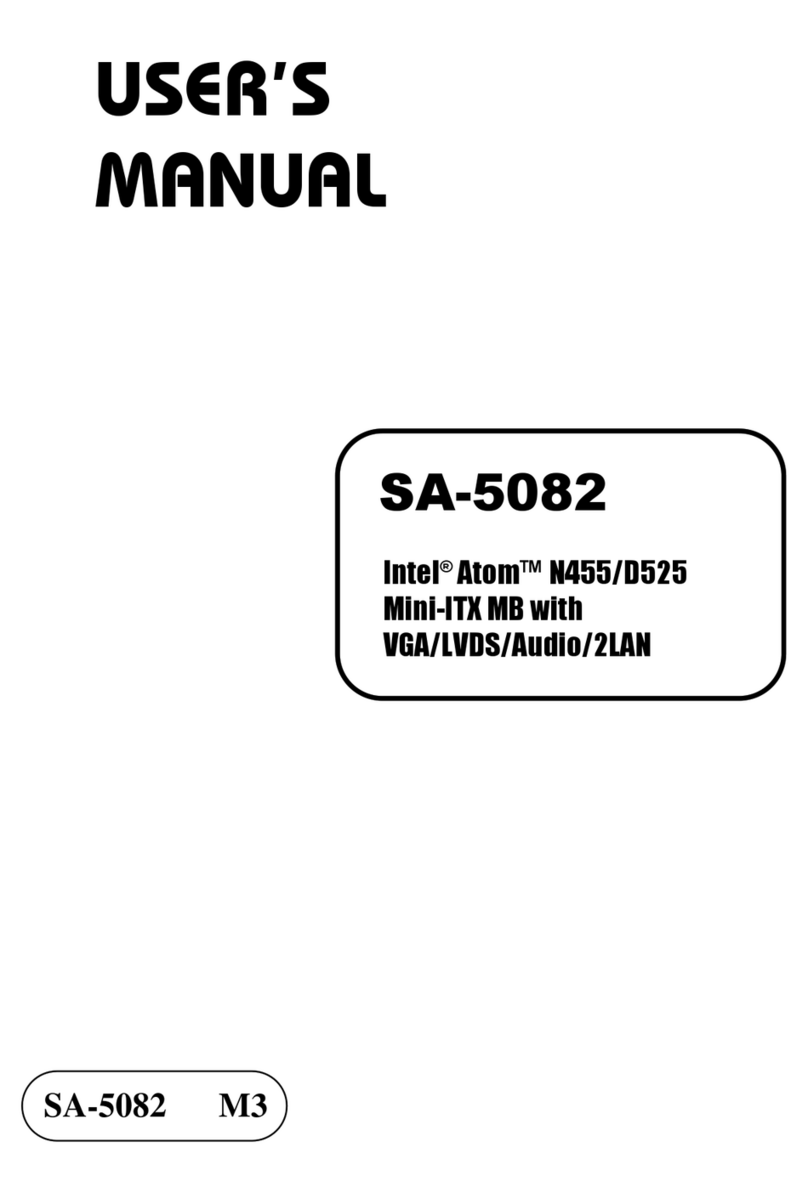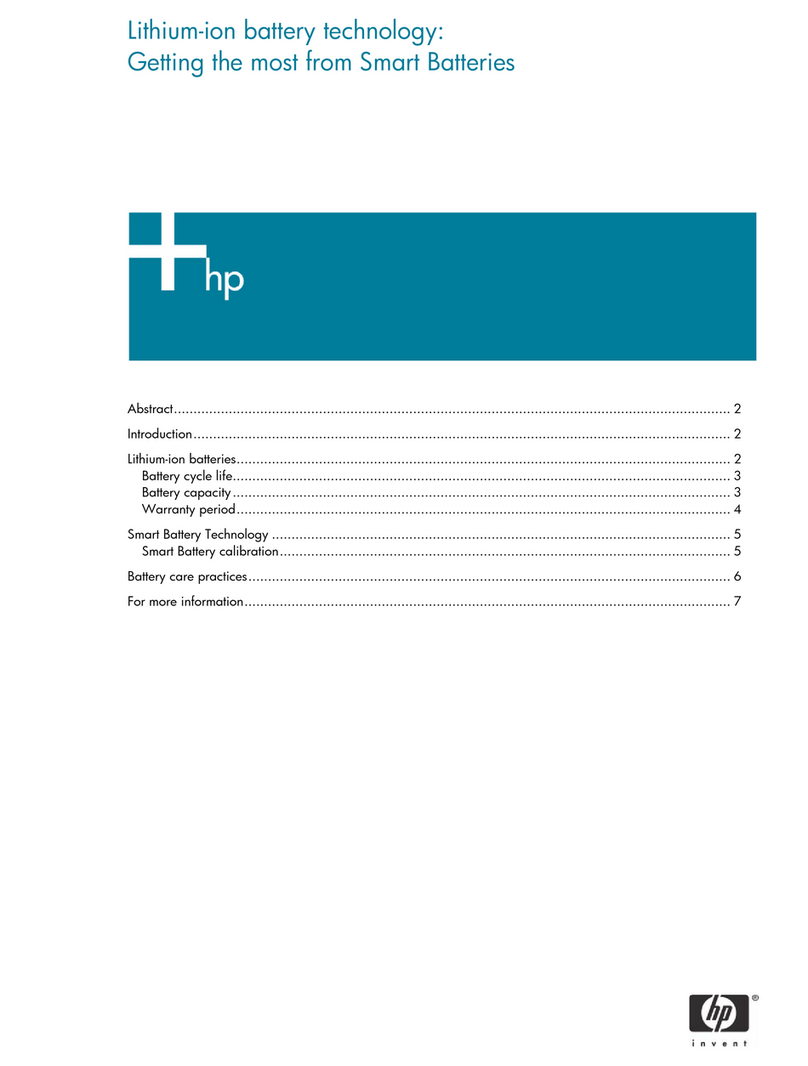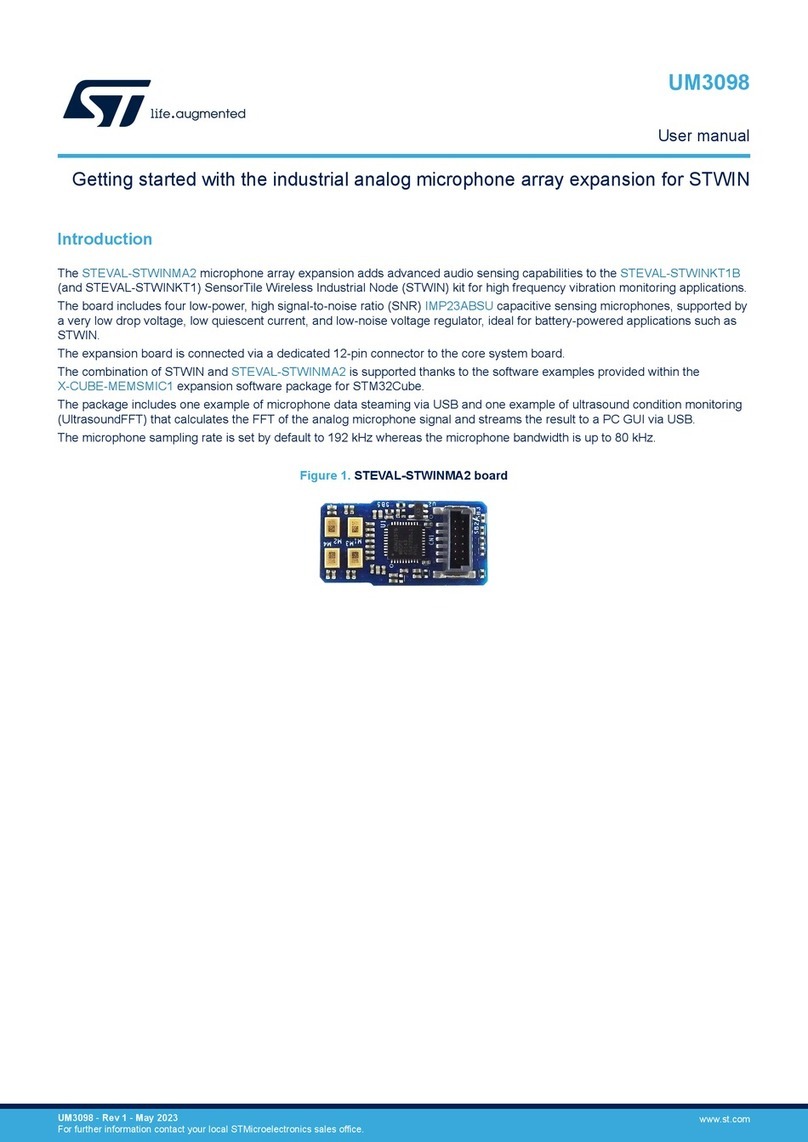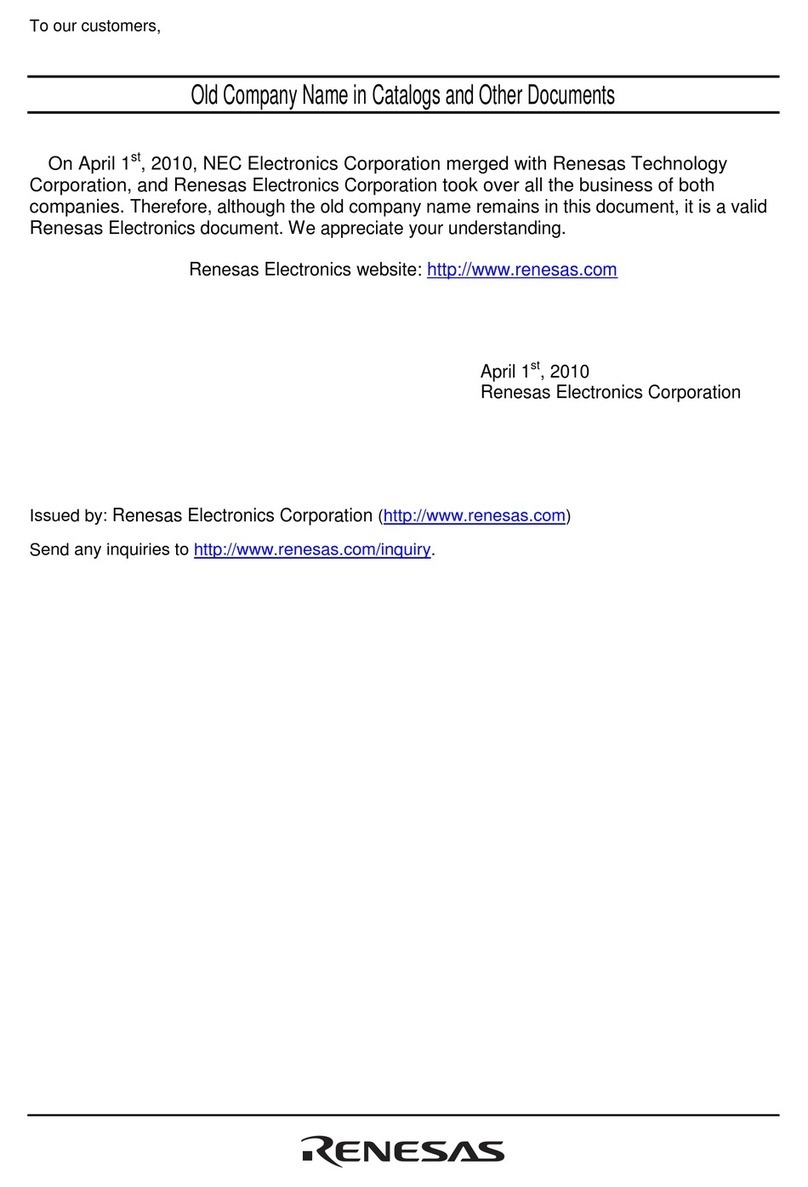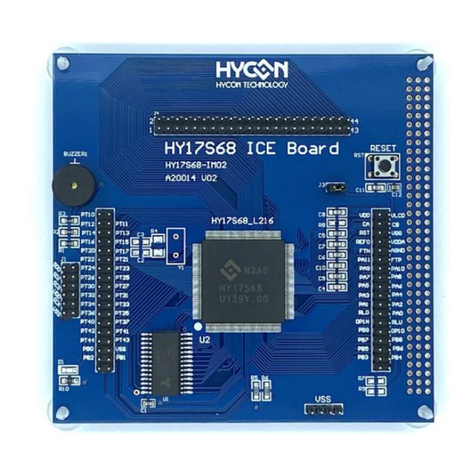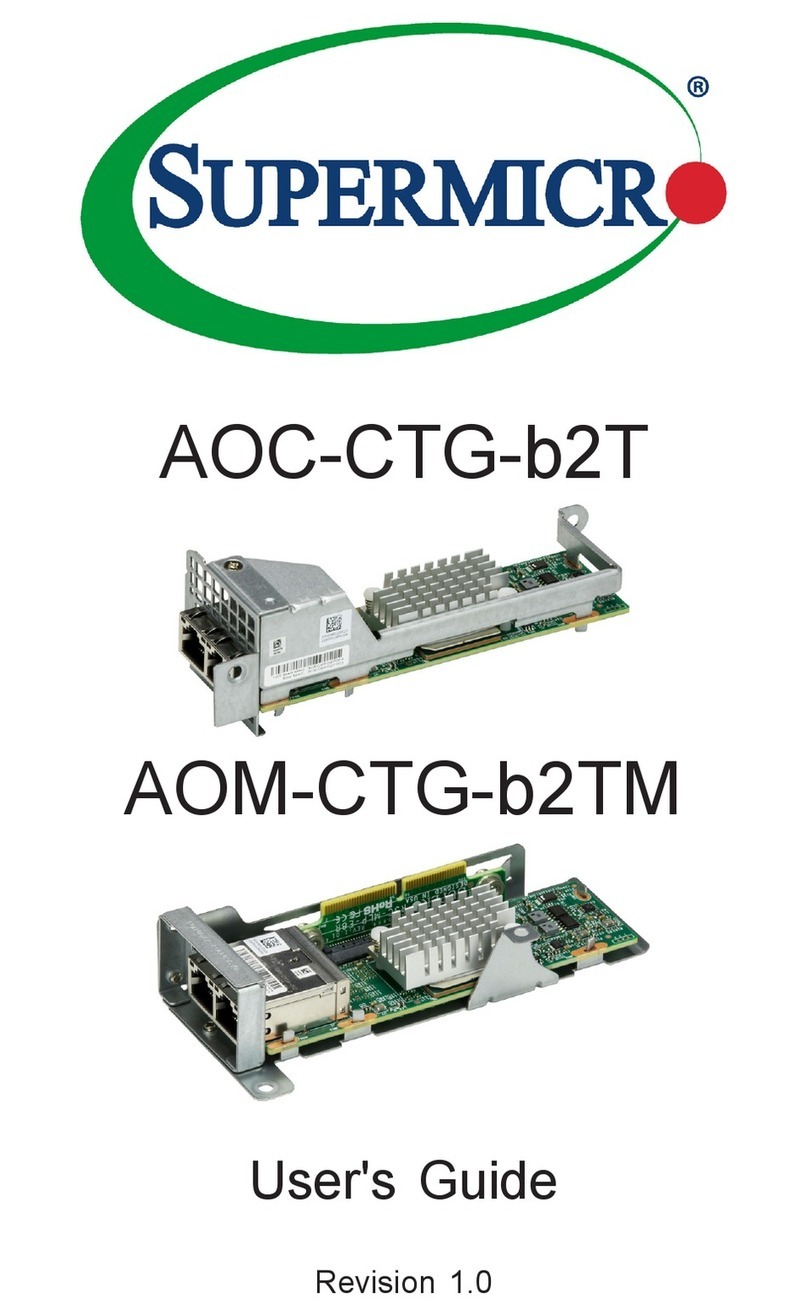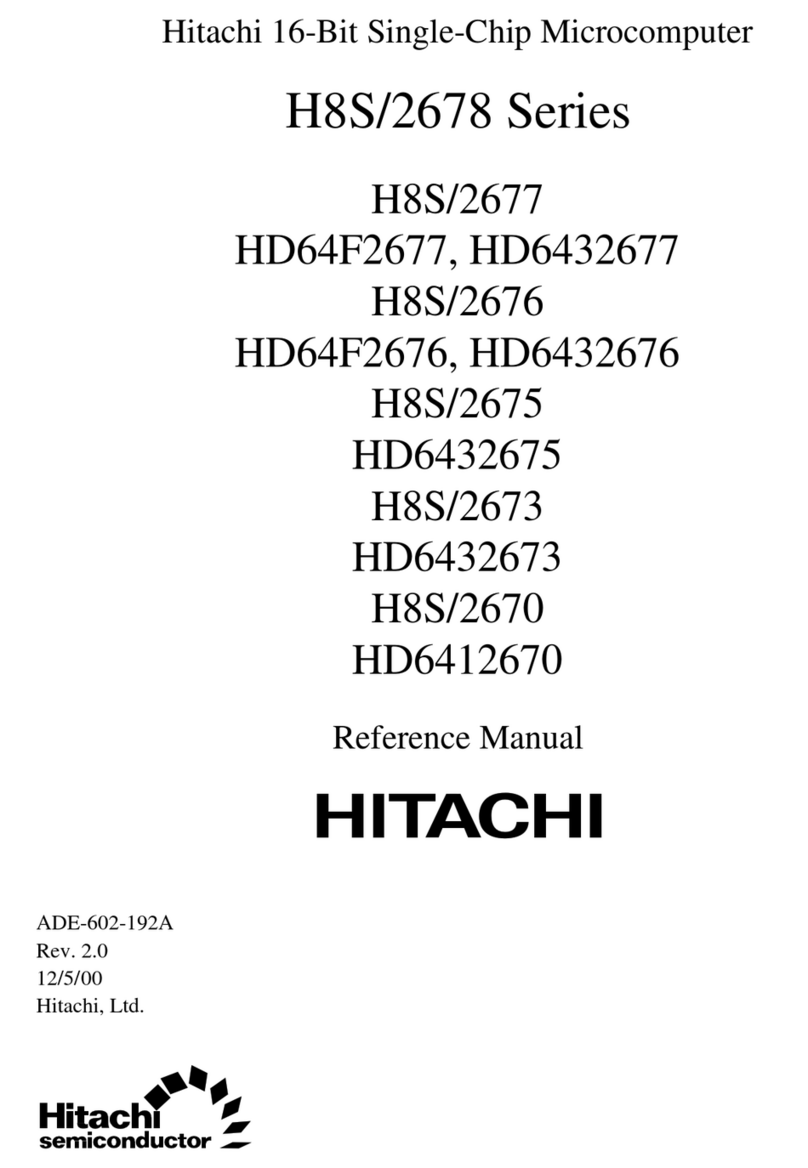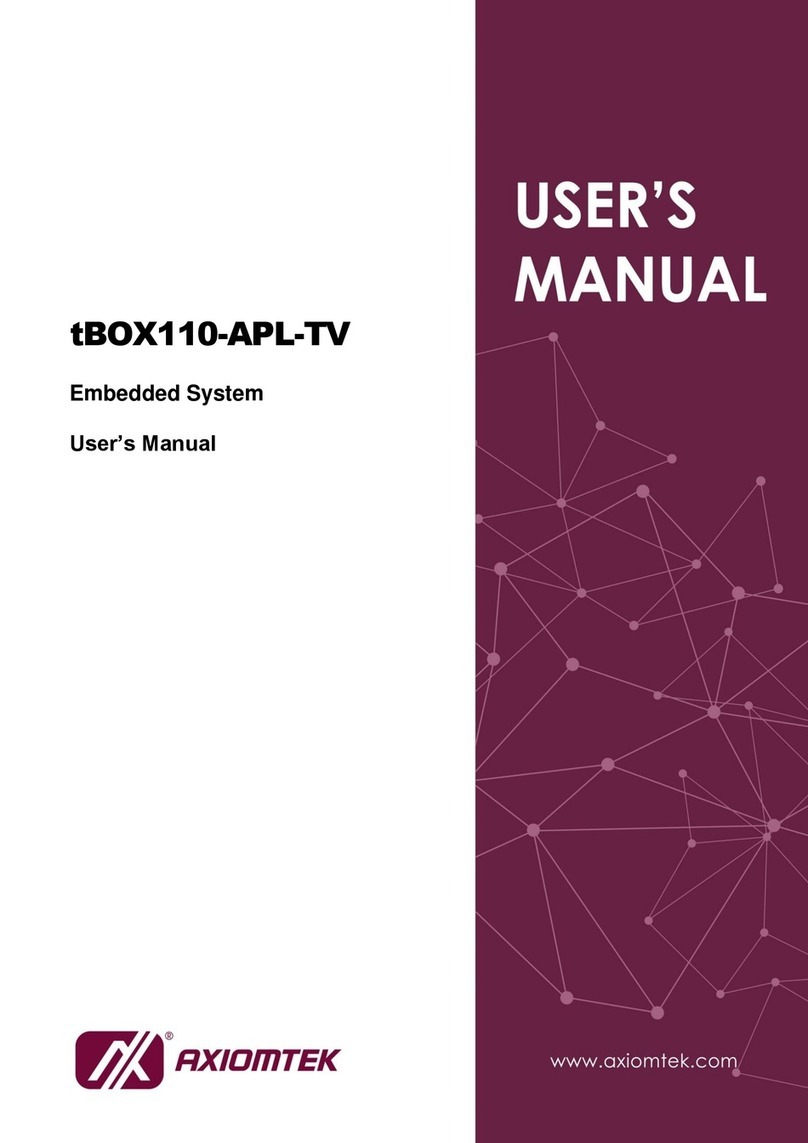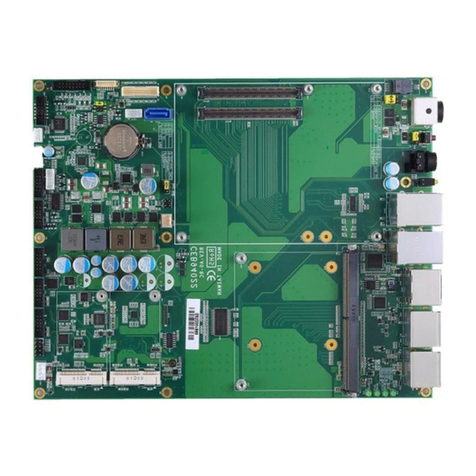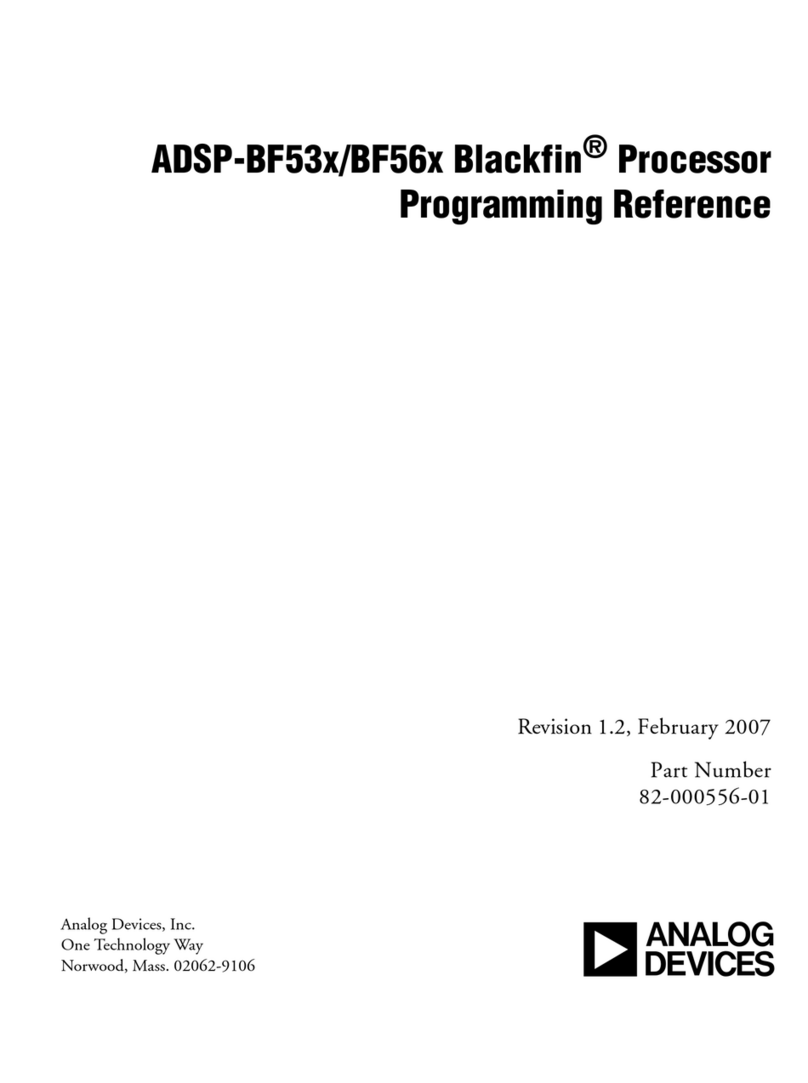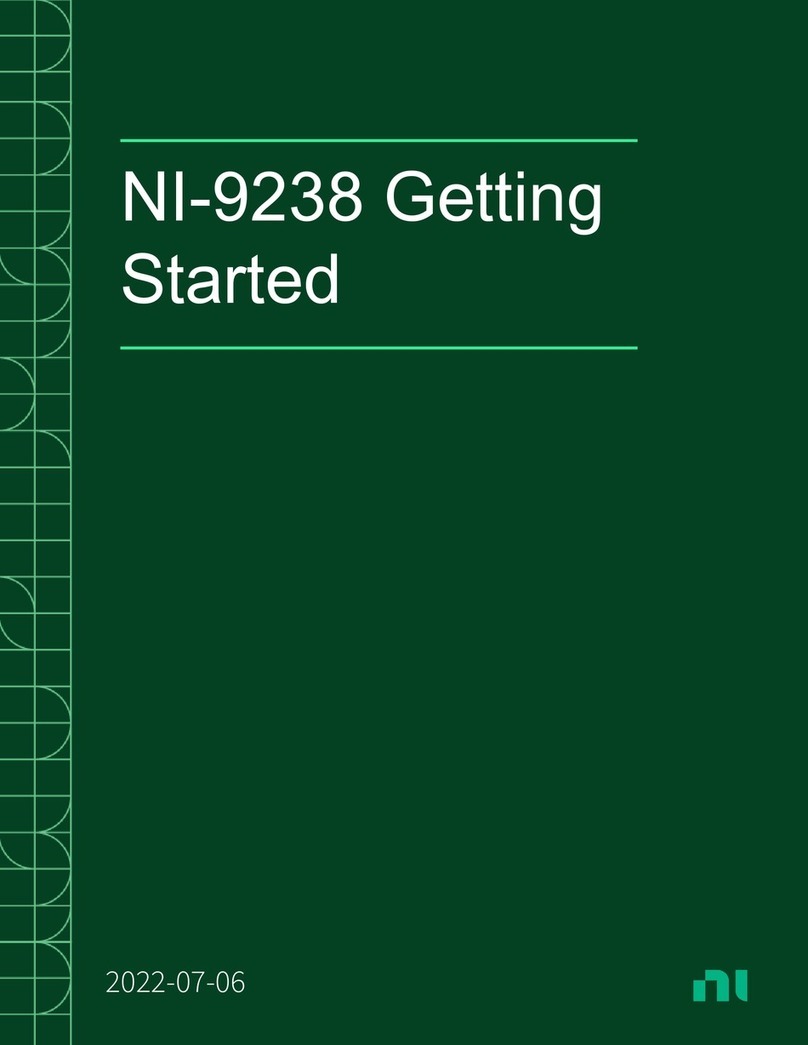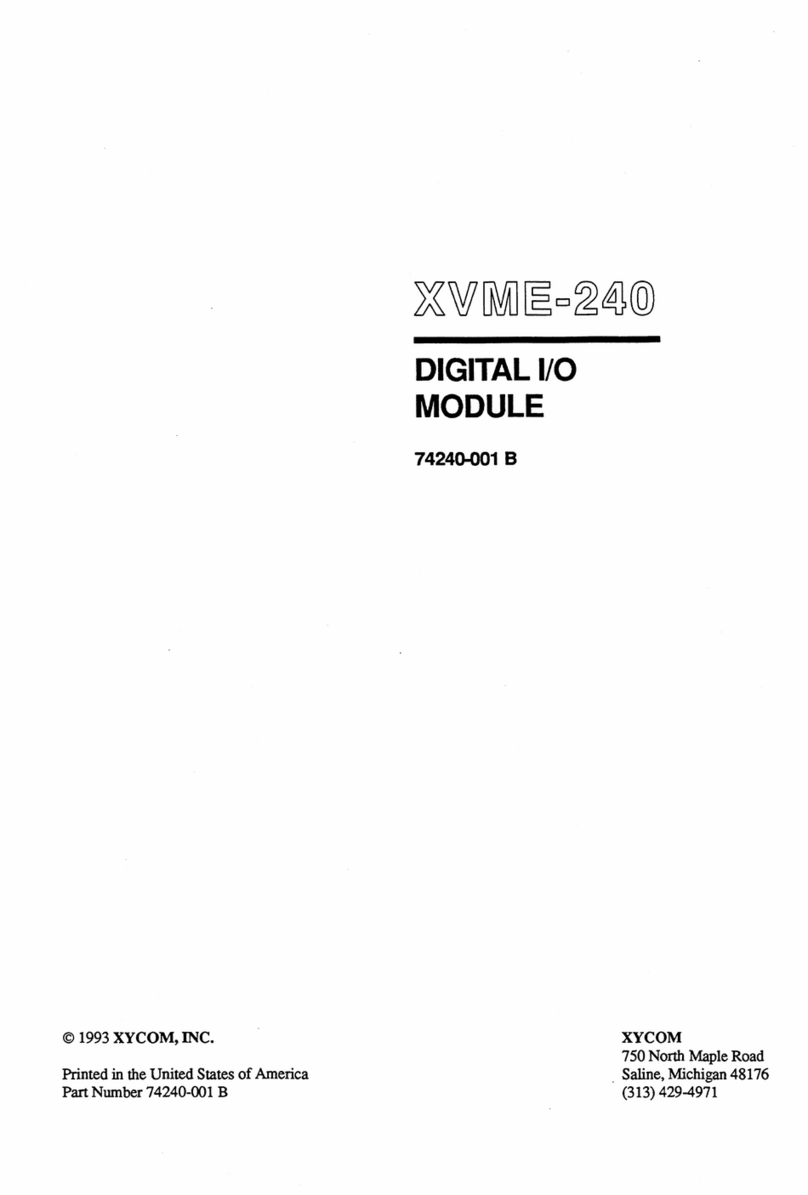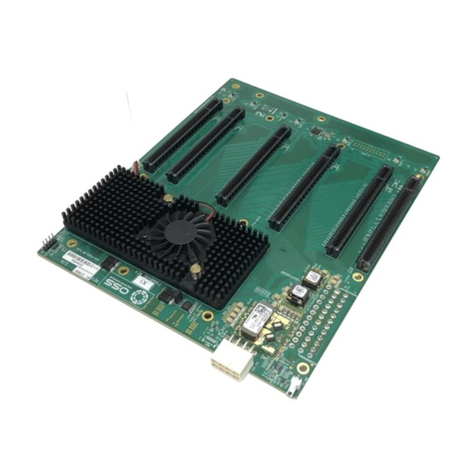Godbout CompuKit ECONORAM IV User manual

ECONORAM
IV
T.M.
USER•s
MANUAL
· 16K x 8 static
memory•
s~100
using
TMS40L44/MM5t57
• 4MHz
,
~
A(OmpuKitT"
product
from
@@IDffi@lllJ~-----
Rev3/79
, .

Table of contents
About Econoram IV. . . . . . . . . . . . . . . . . . . . . . . . . . . . . . . . . . . . . . . . . . . . . . . . . . . . . . . . . . . . . . . . . . . . . . . . 3
Technical overview . . . . . . . . . . . . . . . . . . . . . . . . . . .. . . . . . . . . . . . . . . . . . . . . . . . . . . . . . . . . . . . . . . . . . . . 3
Parts list . . . . . . . . . . . . . . . . . . .. . . . . . . . . . . . . . . . . . . . . . . . . . . . . . . . . . . . . . . . . . . . . . . . . . . . . . . . . . . . . . 3
Assembly procedures . . . . . . . . . . . . . . . . . . . . . . . . . . . . . . . . . . . . . . . . . . . . . . . . . . . . . . . . . . . . . . . . . . . . . 4
Component layout . . . . . . . . . . . . . . . . . . . . . . . . . . . . . . . . . . . . . . . . . . . . . . . . . . . . . . . . . . . . . . . . . . . . . . . . 5
Construction . . . . . . . . . . . . . . . . . . . . . . . . . . . . . . . . . . . .. . . . . . . . . . . . . . . . . . . . . . . . . . . . . . . . . . . . . . . . . 6
Memory address assignment/disable . . . . . . . . . . . . . . . . . . . . . . . . . . . . . . . . . . . . . . . . . . . . . . . . . . . . . . . 7
Memory protect switches
..................................................................
7
Write strobe select switch. . . . . . . . . . . . . . . . . . . . . . . . . . . . . . . . . . . . . . . . . . . . . . . . . . . . . . . . . . . . . . . . . 7
Phantom line
..............................................................................
7
Caution . . . . . . . . . . . . . . . . . . . . . . . . . . . . . . . . . . . . . . . . . . . . . . . . . . . . . . . . . . . . . . . . . . . . . . . . . . . . . . . . . . 7
Schematics . . . . . . . . . . . . . . . . . . . . . . . . . . . . . . . . . . . . . . . . . .. . . . . . . . . . . . . . . . . . . . . . . . . . . . . . . . . . 8, 9
Memory testing . . . . . . . . . . . . . . . . . . . . . . . . . . . . . . . . . . . . . . . . . . . . . . . . . . . . . . . . . . . . . . . . . . . . . . . . . . . 1O
Memory testing routine . . . . . . . . . . . . . . . . . . . . . . . . . . . . . . . . . . . . . . . . . . . . . . . . . . . . . . . . . . . . . .
..
. . . . . 1O
Circuit description . . . . . . . . . . . . . . . . . . . . . . . . . . . . . . . . . . . . . . . . . . . . . . . . . . . . . . . .. . . .. . . . . . . . . . . .
11
Customer service information . . . . . . . . . . . . . . . . . . . . . . . . . . . . . . . . . . . . . . . . . . . . . . . . . . . . . . . . . . . . . . 12
Limited warranty information . . . . . . . . . . . . . . . . . . . . . . . . . . . . . . . . . . . . . . . . . . . . . . . . . . . . . . . . . . . . . . . 12
i
ECONORAM
IV
·
COMPUKIT
PRODUCT
FROM
GODBOUT
ELECTRONICS
·
BOX
2355,
OAKLAND
AIRPORT,
CA
94614

ABOUT
ECONORAM
IV
Congratulations
on
your
decision
to
purchase
-
:oNORAM
IV,
a 16K x 8 memory board designed
>ecifically for electrical and mechanical compatibility with
e
S-100
buss standard. The
S-100
buss currently is one of
the most popular
in
the industry and by far the most prolific;
we believe this board, with the rest
of
the
S-100
portion
of
the ECONORAM family, is one
of
the best memory boards
available for that buss.
We
recommend that the parts
in
this
kit
be checked
against the parts list for completeness and that these in-
structions be read through carefully before starting. Com-
pletion
of
the assembly should take from one to four hours,
depending
on
previous assembly experience, and upon
completion, you will discover
--
as thousands
of
satisfied
ECONORAM owners have discovered
--
the pleasure
of
using a fine memory board that just works, and works, and
works.
As the first company to nationally offer memory
kits
to
computer hobbyists, we again thank you for choosing
ECONORAM
IV
...
welcome to the club.
Parts
List
TECHNICAL
OVERVIEW
This board incorporates proven static memory tech-
nology. There are currently two popular types of memory
being used
in
products such as this: static and dynamic.
Static memories are the overwhelming choice
in
applica-
tions where speed, complexity, ease
of
use, and reliability
must all be considered
...
there is no refresh slowdown, the
CPU
is freed from the drudgery
of
caretaking the memory,
and techniques such
as
direct
memory access
(OMA)
are far
more reliable and easier to implement.
The individual memory !Cs used
on
this board are
grouped together to form a single 16K x 8
block
of
memory,
addressable
on
any 16K boundary using the on-board dip
switch
(no
jumpers required). Additional features include
write
protect
switches for each 4K
sector
of
the 16K block;
a write strobe selection switch which allows use of memory
in
systems with
or
without a front panel (MWRITE strobe);
allowance for use with
or
without the PHANTOM line;
thorough capacitor bypassing
of
supply lines to suppress
transients; plus on-board regulation and heat-sinking for
reliably
cool
operation. All this and
sockets
for all !Cs
go
onto a double-sided, solder-masked printed
circuit
board
with a complete component-layout legend.
Upon receipt
of
your kit, check your parts against the list below.
D (1) Econoram
IV
circuit
board.
INTEGRATED CIRCUITS (note: the following parts
may have letter suffixes and prefixes along with the
key numbers given below.)
0 (32) TMS4044
or
MM5257N-3L memories
(U11
-U42)
0
(1)
7
4LSOO
nand gate
(U2)
D
(1)
74LS02 nor gate
(U3)
D (3) 74LS04 hex inverters
(U4
-
U6)
0 (1) 74LS240 TRI-ST
ATE®
inverters
(U7)
D
(1)
74LS139dual1of4decoder(U1)
D
(3)
7805
positive 5V regulators
(U8
-U10)
OTHER ELECTRONIC COMPONENTS
D
(7)
2.7K
ohm
resistors (red-violet-red;
R1
-
R7)
D
(6)
39uF tantalum capacitors
(C1
-C6)
D (14) ceramic disk bypass capacitors*
MECHANICAL COMPONENTS
D (39) lowprofile
sockets*
D
(1)
slide switch (S2)
D (1) 8 pole dip switch (S1)
D
(3)
heat sinks for regulator !Cs
D (3)
6-32
bolts
D (3)
6-32
lockwashers
D (3)
6-32
nuts
D
(1)
instruction booklet
*supplied already soldered to board.
3/79
3

ASSEMBLY
PROCEDURES
Proper operation
of
your
kit
depends
on
good
soldering
technique, along with
correct
identification and handling
of
the various parts used during construction.Read this manual
thoroughly before plugging
in
your soldering iron.
SOLDERING TECHNIQUES. The Econoram Board is
solder-masked.
In
case you are not familiar with solder-
masked boards, they are similar
to
standard
PC
boards, but
are screened with a solder-resistant coating. This mask is
screened over the entire board,
except
where there are
solder connections to be made; since solder does not com-
fortably hold to or flow over the resist, the chances ofgetting
a bridge between tight, adjacent traces are decidedly
minimized.
However, soldering a solder-masked board requires a bit
of care. All soldering is performed
on
the solderside of the
board; we recommend keeping all component leads straight
up at all times, not bent over as with some other types
of
boards (see figure 1). When soldering, bring the iron tip
in
at
an
angle, against the board pad and component lead; then
feed
in
a tiny bit
of
solder at opposite ends
of
the lead (see
figure
2)
. This makes a good joint with no excess solder.
NOTE:
Use
of
any type
of
solder other than rosin core solder
invalidates the warranty.
Do
not use any type
of
solderpaste
or corrosive flux under any conditions.
IDENTIFICATION OF PARTS. There are many ICs used
in
this
kit
; each one must be oriented
correctly
for proper
operation. Most ICs have a dot near one corner that indi-
cates pin 1 (see figure
3)
; sometimes this
dot
appears
in
conjunction with a deeply cut notch
or
circle
.Other types in-
dicate the pin 1 end of the
IC
by a deep notch,
or
a notch
within a shallow
circle
(see figure 4).
In
case of doubt, place
the
IC
in
front of you so that any identifying numbers read
from left to right; pin 1 is almost always
in
the
lower
left-hand
corner (figure
5)
.
Additionally, the 6 tantalum capacitors must be
correctly
identified as to the (+ )
and
(-) ends. The (+ ) end is the
rounded end and is also identified with a (+ ) mark
on
the
body (see figure
6)
.
HANDLING OF PARTS. All integrated
circuits
may be
damaged by static
electricity
discharges;however,MOS ICs
-such as the memory ICs included with your
kit
-are most
susceptible to this problem. You can easily accumulate a
static charge
on
your body
in
the thousands-of-Volts range
(say, by walking across a rug
on
a dry day). If you then touch
the pins of
an
IC
, those thousands
of
Volts flow into the
IC
and can damage the internal structure. To prevent this from
happening, leave the ICs
in
their protective foil until needed;
then, before plugging
in
each
IC
, touch the protective foil
with your finger to drain off any residual charge. Also, avoid
wearing clothing that is prone to generating static
electricity
during construction (such
as
sweaters, certain types of
acrylic
fabrics, and so on).
Another caution concerns the mounting of resistors.
These are small, somewhat fragile parts, and excessive
force used while bending the leads may cause damage or
crack
the part. Either use a commercial lead bender (availa-
ble from Godbout's and many other
electronic
vendors),
or
use needlenose pliers to grasp the lead
close
to the body of
the resistor and then bend the lead downward (see figure 7).
lead
component
Figure
1.
Figure
2.
dot
notch
Figure
3.
Figure
4.
(+)end
do
not
bend
leads
over
@:!~~1~1
:·:·:·:·:::::::::::::::::::::::
::::::::::::::::::::::::::::::::::::::::
::::::
..................
·.·····
.........
@
·.·····.
....
......
.
.·
.·.·
·.·.·.·.· .·.·.·
..
<74Lsnn
<:
:•
·.·
.
:-:·:·:-::::::::::
...
- .
-.-:::.:-:-:-
:·
:·:·.
~
-:
~
-:::::::::::::::::::::·:
=======
pin
1
Figure
5.
(-)
end
~
Figure
6.
pliers
Figure
7.
capacitor
legend
on
board
bend
lead
downward
4
ECONORAM
IV
·
COMPUKIT
PRODUCT
FROM
GODBOUT
ELECTRONICS
·
BOX
2355,
OAKLAND
AIRPORT,
CA
94614

GI
...
....
GI
"'
\'-c,O~o\\,_~
rs6
COMPONENT
SIDE
A
GmpuKit'"
product
from
@@@>ffi@(ID~
+8VOLTSDC
, 113A
COPA.
1978
111111111111111111111111111
Component Layout
UP

CONSTRUCTION
Keeping the preceding information
in
mind, it is now time
to mount the various components and install the ICs into their
sockets. Orient the board as shown
in
the component layout;
then referring to this layout, follow the steps below
in
the
order given. i
D
1.
Bend leads, mount, ancf solder the resistors
in
place
as indicated.
D 2. Bend leads, mount
and
solder the 6 tantalum capaci-
tors
in
place as indicated, carefully observing the orientation
of
the(
+ ) end.
D 3. Mount the slide switch
in
position as shown
in
figure 8
(note: orientation is not important).
D
4.
Mount the three regulators and the regulator heat
sinks
in
place. Referring to figure
9,
observe that the heat
sinks mount
on
top of the board, and then, the regulators
mount
on
top
of
the heat sinks. If desired, a small dab
of
heat
sink compound may be added between the regulator cases
and heat sinks to improve thermal transfer from regulator to
sink. Again referring to figure
9,
bend all regulator leads as
shown, then bolt the heat sink regulator assembles into
place using the provided nut, bolt, and lockwasherhardware.
After these assemblies are
in
place, solder the regulator
leads
on
the non-component side
of
the board.
D
5.
Observe the 8 pole dip switch. The side with the num-
ber
1-8
faces the upper edge
of
the board (see figure
8)
.
Mount the switch
in
place, and then solder. (Note: May be
already soldered
in
place
.)
D 6. Before proceeding, check your work so far by testing
the board for any shorts between supply lines and ground.
Referring to figure 10, use a Voltmeter to test for a shorted
condition at the test points indicated
on
the regulator.
Perform this test at each regulator. If you find a short cir-
cuit at any
of
these points, carefully check over your board
for the cause of the short. If all readings are satisfactory,
proceed with construction
of
the board.
D 7. Prepare to plug
in
al
IICs
in
accordance with the com-
ponent layout, page
5.
All ICs should have the pin 1 end fac-
ing towards the
left
side
of
the board; any numbers
or
other
markings
on
the
IC
should be right side
up
with the board
oriented as shown
in
the component layout. If any of the writ-
ing is upside down, the
IC
may not be
correctly
inserted.
A common problem with boards returned for repair is im-
proper insertion
of
the
IC
; sometimes a lead from the
IC
will
bend under the part instead
of
going into the socket con-
tacts.
We
recommend inserting each
IC
halfway, and verify-
ing visually that all pins are indeed going into the socket.
Then, push the
IC
in
the rest of the way.
Keeping the preceding
in
mind, insert the support ICs
first, and then insert all memory
IC
.
D 8. Check your work over carefully for errors
in
con-
struction, improperly inserted ICs,
or
improper polarity
of
the
tantalum capacitors. If all is well, assembly
of
your board is
now complete.
Figure
8.
Figure
9.
Figure
1
O.
write
enable/
protect
switches
I
I
@)
I
~
I
attach
with
lockwasher
and
nut
check
for
short
circuit
across
these
points
with
volt-ohmmeter
6
ECONORAM
IV
•
COMPUKIT
PRODUCT
FROM
GODBOUT
ELECTRONICS
•
BOX
2355,
OAKLAND
AIRPORT,
CA
94614

MEMORY
ADDRESS
ASSIGNMENT
This board is addressable as a single 16K
block
on any
K boundary.
DIP
switch positions
1-4
select which 16K
!a
of
memory the board will be associated with as follows:
1 - 0000 -3FFF (hex)
2 - 4000 -7FFF (hex)
3 - 8000 -
BFFF
(hex)
4 -
COOO
-
FFFF
(hex)
Only one
of
these four switches may be
up
(on)
at
a time,
however, all four may be down which will deselect the board
(content
of
the memory may neither
be
changed nor read)
and the board is transparent
to
the system allowing other
boards
to
be addressed to that area as long as it is disabled.
MEMORY
PROTECT
SWITCHES
DIP
switch positions
5-8
are write enable switches. Inver-
sely they may be used for manual write protection
of
the
memory. Each enable protects 1/4
of
the 16K
block
of
memory (4K) as follows:
5 -
1st
4K
of
16K
block
6 - 2nd
4K
of
16K
block
7 -
3rd
4K
of
16~
block
8 - 4th 4K
of
16K
block
Any combination
of
these four switches may be up/onwith·
up write enabling the particular 4K area arid down write
pro-
tecting that area.
WRITE
STROBE
SELECT
SWITCH
This switch selects use
or
rion-use
of
the S-100buss
sig-
nal
MWRITE
(pin 68). This signal
is
normally produced
by
a
front panel and would not be available in front panel-less
machines; however, some
CPU
boards now implement this
signal. If
MWRITE
is
present in your machine, place the slide
switch in the center position. If not present, this switch
should be in the up position.
PHANTOM
LINE
----------------------------------1
In
response
to
increasing numbers
of
users who have re-
1ested inclusion
of
"Phantom" line, Buss pin
67
which
is
ten used for implementing
power
on jump features. This
board is designed for use with active or inactive phantom
lines. Boards which are revision
"A
"
or
earlier have this line
solidly connected. Revision
"B
" and later boards require a
jumper
to
implement this feature (see figure
11
).
CAUTION
Some manufacturers use the PHANTOM line (buss pin 67)
for a refresh signal. This will conflict with the PHANTOM
feature, and cause boards with PHANTOM
to
fail. If your
system has this conflict it must be resolved
by
either
eliminating the refresh signal
on
the
CPU
board
or
disabling
the PHANTOM feature on this and other boards.
On
revision "A"
or
earlierboards the Phantom feature may
be disabled
by
cutting the trace where
it
leaves buss pin 67.
On
revision
"B'
' and later boards the
PHANTOM
feature
is
disabled if the jumper is NOT CONNECTED
on
.the trace
to
buss pin
67
(see figure
11
).
If you want the PHANTOM feature, the
confli~ting
refresh
signal may be eliminated
(IF
NOT
USED
ELSEWtlERE
IN
THE
SYSTEM)
by
cutting the trace connected to
bu~s
pin
67
on
e
CPU
board.
BE
SURE
OF
YOUR
SYSTEM CONFIGURA-
.
ON
BEFORE
CUTTING
ANY
TRACES.
Figure
11
.
6/78
7

SCHEMATIC
-
ECONORAM
IV
All
4 MAll
A10
37
11
MAHI
D07
B
MDI7
A9
12
MA9
D06
4f,'l
MDI6
AB
B4
MAB
D05
1~
MDI5
A7
6
MA7
D04
3B
MDf4
A6
B2
11
MA6
D03
12
MDI3
A5
MA5
D02
BB
MDI2
A4
30
13
MA4
DOl
6 MDil
A3
B
MA3
D00
36
9
us
B
MDHl
A2
Bl
MA2
':"
Al
MAl
Af,'l
79
MAil
-=-
9 Dl7
MD07
43
MD06
DI6
SOUT
45
BLOCK
SELECT
MD05
DIS
SWITCHES
.--
--..,
R5
MD04
DI4
G 4 I
DS
! I
3
SELB
Y0
I I
A15
32
IDS2
I
MD03
42
DI3
Y1
I I
Ul
6 I
DS3
I 6
Y2
MD02
DI2
2
SELA
I I
A14
B6
ID
S4 I
?3
MDOl
7
94
Dil
I I
L------'
MD00
B Diil
15
'--
-
GJ.
G
13
y~
CEii!
A13
85
SELB
Y1
CEl
6
Ul
Y2
CE2
Al2
33
14
SELA
Y3
CE3
Rl
R2
R7
WRITE
ENABLE
R3
R4
*SEE
NOTE
SWITCHES
PHANT
V------------0-
--
r-
-
-,
I
DS
5 I
WEil
SMFMR
47
I
ID
S6
WEl
I
PDBIN
7B
iDs7
WRITE
STROBE
SELECT
I
WE2
.
SWITCH
ID
SB
WE3
MWRITE
6B
I I
R6
L
__
_
...J
10
11
'::"
PWR
77
9
NOTE:
On
revision
"A" boards
this
trace
is
solid;
on
revision
"B"
and
later
boards
require
a jumper
to
implement.
8
ECONORAMIV
·
COMPUKIT
PRODUCT
FROM
GODBOUT
ELECTRONICS
·
BOX
2355
,
OAKLAND
AIRPORT
,
CA
94614

MDifJ
MD!l
MDI?
11
DIN DIN
r-------,
DIN
12
All
I I
MAll
I I
13
I
I
MAUI
Al
fl
I I
14
I
MA9
A9
CHIPS
5-1
MAB
15
AB
)>
16 0
MA7
A7
0
"'
,,.,
17
Vl
MA6
A6
Vl
DOUT
7
r
~
DOUT
5
CHIPS
DOUT
z
MA5
6
A5
,,.,
SIMILARLY
L~
('"")
ARRANGED
5 0
MA4
A4
~
0
z
MA3
4
A3
MA2
3
A2
MAl
2
Al
MAflJ
Ail
MDOflJ
MDOl
MD07
CE
WE
CT
WE
cr
WE
.J
CT
WE
lfl
B
CEx
WEx
0
1
2
3
4
5
6
7
-
WE0
----1
A
CEl
-
WEl
----1
B
CE2
-
WE2
-----.,
c
CE3
-
WE3
-D
l
l l l l J_ l l l l l l l l l l
MDUI
MDil
MDI2
MDI3 MDI4 MDI5
MDI6
MDI7
MDOflJ
MDOl
MD02 MD03 MD04
MD05
MD06
MD07
+B
1
U8
U9
urn
+B
51
IN
OUT
vcq
IN
OUT
vcc2
IN
OUT
v
CC3
GND GND GND
GND
50
Cl
C2 C3
C4 C5 C6
GND
lflJflJ
GND
-=-
SCHEMATIC
-
ECONORAM
IV
6/78
9

MEMORY
TESTING
MEMORY
TESTING
ROUTINE
If the memory board seems
to
be working properly, the
Memory Testing Routine (figure 13) can be used
to
give the
board a more thorough workout. It
is
rather slow; but will do
31!11!10
21
""
40
1!11!111!1
STRT
LXI
H141!1
the
job
well. It can be entered via editor/assembler
or
front
31!103
3E
80
1!1020
END
HVI
A181!1
:
panel switches.
31!105
32
6E
30
00
30
STA
FIN
3008
3E 10
0040
HVI
A1ll!IH
The routine is set up to test 16K from
4000
hex up to
300A
84
1!11!151!1
ADD
H
8000
hex. This may be changed by entering a different start-
301!18
41"
1!11!160
HOV
C1A
ing address at "STRT" (3001 -3002) and/or a different end
300C
16
1!10
01!170
HVI
D11!1
address at "
END
" (3004 -high order byte only).
31!Jl!JE
IE
l"F
1!11!180
MVI
E10l"FH
Ifthe memory passes the test it starts over again. You may
3011!1
22
65
30
01!191!1
DONE
SKLD
STAD
on the other hand, insert a jump instruction at "MARK" to
3013
AF
0100
XRA
A
31!114
47
1!1111!1
MOV
B1A
some user routine
or
, ifdesired the usermay enter
an
output
3015
7B
0120
SCND
MOV
A1E
instruction or, can
do
a notification routine at "MARK"
to
3016
SA
1!1130
HOV
E10
show successful completion and restart.
3017
57
1!1141!1
HOV
D1A
If the memory fails the test,
critical
information is stored
3018
79
0151!1
MOV
A1C
and the routine enters a software "HALT
",
that is a "jump to
31!119
2A
65
31!1
"l
60
LHLO
STAD
here' at "SHL
T".
Front panel lights, if any, will show this
301C
72
01
70
FILL
MOV
M10
3010
23
1!1180
INX
H
state.The usermay then use the front panel
or
dump routines
301E
BC
1!1190
CHP
H
to
display the following stored failure info:
301F
C2
IC
31!1
1!121!10
JNZ
FILL
31!122
2A
65
30
0211!1
LHLO
STAD
3025
73
0221!1
NEXT
MOV
M1E
3069* "
FDE
" D, E pair
...
D is the fill character
3026
7B
1!1230
MOV
A1E
and E is the test character
3027
BE
0240
CMP
H
3068*
"FHL" H, L pair .
..
the failure address
3028
C2
61"
30
0250
JNZ FAIL
3060*
"FOUT"
=
the data expected at this address
302B
79
0260
MOV
A1C
302C
23
0270
INX
H
306E* "
FIN
"
=
the data read from, the address
302D
94
1!1280
SUB
H
* address from
Memory Testing Routine
List
i
ng
.
31!12E
C2
4D
31!1
1!1290
JNZ
NDON
3031
B8
1!1300
CHP
B
31!132
44
1!1310
MOV
B1K
The usermay replace the "jump" at "
SHL
T" with ajump
to
3033
CA
15
30
1!1320
JZ
SCND
3036
3A
66
30
0325
LOA
STAD+l
a display
or
notification routine.
3039
""
1!1330
MARK
NOP
The difference between "FOUT" and "FIN" should indi-
303A
00
1!1331
NOP
cate which
bit
is failing, indicating which chip
or
area is
303B
00
0332
NOP
causing the problem.
303C
3A
6E
31!1
1!1341!1
LDA
FIN
This test will find most
of
the harder to distinguish errors.
31!13F
89
1!1351!1
CMP
c
3041!1
CA
""
31!1
1!1360
JZ
STRT
31!143
79
1!1371!1
MOV
A1C
31!144
67
1!1380
MOV
H1A
31!145
2E
1!10
039
0
HVI
L11!1
3047
C6
11!1
1!1400
ADI
I
0K
3049
41"
04
13
MOV
C1A
31!14A
C3
l 0
30
0420
JHP
DONE
3040
22
67
30
0431!1
NOON
SHLO
NXAD
3051!1
7A
0440
LOPB
MOV
A1D
3051
BE
0450
LOPA
CHP
H
3052
C2
61"
30
0460
JNZ FAIL
3055
2C
1!1470
INR L
31!156
C2
51
JS
0480
JNZ
LOPA
31!159
79
1!1491!1
HOV
A1C
305A
24
es""
INR H
31!15B
BC
1!1510
CMP
K
305C C2
50
30
0520
JNZ
LOPB
305F
2A
67
31!1
1!15
31!1
LHLO
NXAD
31!162
C3
25
31!1
1!1541!1
JMP
NEXT
31!165
0550
STAD
DS
2
3067
0560
NXAD
OS
2
3l!l69
0570
!"DE
OS
2
31!16B
0581!1
FHL
DS
2
3060
1!1590
FOUT
OS
I
306E
1!16S0
FIN
OS
I
306F
22
6B
30
1!1611!1
FAIL
SHLO
FHL
3l!l72
32
60
30
0620
STA
!"OUT
31!175
7E 063l!I
HOV
A1H
3l!l76
32
6E
30
1!1640
STA
FIN
31!179
EB
0650
XCHG
3l!l7A
22
69
31!1
0660
SKLO
FOE
3"7D
C3
70
30
0670
SHL
T JMP
SHL
T
308
0
0680
*
10
ECONORAM
IV
.
COMPUKIT
PRODUCT
FROM
GODBOUT
ELECTRONICS
•
BOX
2355,
OAKLAND
AIRPORT,
CA
94614

CIRCUIT
DESCRIPTON
The heart ofEconoram
IV
is the TMS4044/MM5257 static
:imory
IC
(RAM)
, which can store 4096 single bits of infor-
~tion
(thus, each is a "4K x 1" memory
IC)
. Unlike standard
HAMs,
those included with your kit are specifically desig-
nated by the manufacturer
as
low power, high speed parts.
These ICs are arranged
in
rows that are 8 ICs wide. This
way, each row can store 4K x 8 bits of information. Parallell-
ing 4 of these rows together produces a total memory
storage of 16K x 8 bits. (Note that the bit number corres-
ponding to a given column of ICs is indicated along the top
edge of the memory array).
Now that we have this storage, there are still other
aspects we must consider. First, we need to address a
specific location
in
memory;
and,
we need to be able to write
data into the memory, or read data from the memory.
The schematics
on
pages 8
and
9 show the address
cir-
cuitry along with the other Econoram
IV
circuitry. Each
memory
IC
requires 12 address bits (AO-A11) to access any
one of the 4096 bits available
in
the
IC
. These address bits
are generated by the
CPU
and
are buffered by a number ofin-
verters. After buffering, a particular address is presented to
all
IC
address selection pins. However,
we
additionally need
to select which particular row of ICs is to react to the given
address. This requires 4 more address bits (A12-A15),
which are decoded
and
used to enable the desired row of
ICs (note row markings along the right hand side of the
memory array).
When
data is to be written into memory, it first passes
through 8 inverting buffers before being put
on
the data pins
of the
RAMs
(buffering prevents loading of the data buss).
Data to
be
read
on
to the data buss from memory passes
rough 8 TRI-ST
ATE®
inverting buss drivers; when data is
1t
being read
on
to the buss, the outputs ofthese inverters
_ e
in
a high-impedance or "disconnected" state.
An
unfortunate fact of life is that logic ICs generate
switching transients that travel along the powersupply lines.
If these transients work their way into the logic circuitry,
problems can appear. To prevent such occurances, bypass
capacitors are tied across the power lines at regular inter-
vals
in
the memory array
and
at every support
IC
.
This board is guaranteed to operate at 4MHz over the full
temperature range
(0°
-70° C ambient)
and
to draw less than
2000
mA
(2
amps).Our typical measured currents were less
than
1600
mA
at cold start-up, rapidly decreasing to around
1200-1400
mA,
depending
on
the surrounding temperature.
We
have heard similar reports from the people already using
these boards.
It is interesting to note that static
RAM
technology has
progressed to the point that this high-performance static
RAM
board is comparable
in
cost and power consumption to
dynamic memory boards.
THANK
YOU
This board is
the
result of much time, work
and
ex-
perience
on
the part of a number of people.
We
strive for a board that doesn't just work the first time,
but continues to give reliable operation for a long time. If
we
can be of any help to you
in
applying this board, or if you
have any questions, please let us know.
As
always, we
solicit
your comments, letters,
and
new product sugges-
tions.
HAPPY
COMPUTING!
3/79
11

,.
CUSTOMER
SERVICE
INFORMATION
Our paramount concern is that you be satisfied with any Godbout
CompuKit product. If this product fails to operate properly, it may be
returned to us, see warranty information below.
If you have any questions about assembly, performance, specifica-
tions or need further information feel free to write us at:
P.O.
Box
2355,
Oakland Airport,
CA
94614.
When
writing, please be as specific as possible concerning the nature
of
your query.
We
maintain a 24 hour a day phone, for taking orders,
(41
5)
562-0636. If you have problems or questions which cannot be
handled by mail, this number can be used to connect you with our tech-
nical people ONLY during normal business hours
(1
Oam-5pm Pacific
Time). Unfortunately, we cannot return calls,
or
accept
collect
calls.
LIMITED
WARRANTY
INFORMATION
Godbout Electronics will repair or replace, at our option, any parts
found to be defective
in
either materials
or
workmanship for a period
of
1
year from date of invoice. Defective parts
must
be returned for replace-
ment.
If a defective part or design error causes a Godbout Electronics pro-
duct to operate improperly during the 1 year warranty period, we will
service it free (original owner only)
if
delivered and shipped at owner's
expense to Godbout Electronics. If improper operation is due to
an
error
or errors
on
the part of the purchaser, there may be a repair charge.
Purchaser will be notified if this charge exceeds $10.00.
We
are not responsible for damage caused by use of solder intended
for purposes other than electronic equipment construction, failure to
follow printed instructions, misuse
or
abuse, unauthorized modifica-
tions, use of our products
in
applications other than those intended by
Godbout Electronics, theft, fire, or accidents.
Return to purchaser of a fully functioning unit meeting all advertised
specifications
in
effect as
of
date ofpurchase is considered to be com-
plete fulfillment
of
all warranty obligations assumed by Godbout
Electronics. This warranty covers only products marketed by Godbout
Electronics and does not cover other equipment used
in
conjunction
with said products.
We
are not responsible for incidental or consequen-
tial damages.
Prices and specifications are subject to change without notice, owing
to the volatile nature
and
pricing structure of the electronics industry.
"Econoram" and "Econoram IV" are trademarks of W.J. Godbout.
TRI-ST
ATE
®is a trademark
of
National Semiconductor Corp.
Contents of this booklet ©
1979
by Godbout Electronics. All rights
reserved.
We
encourage quotation for the purposes ofproduct review
if source is credited.
,2
ECO
NOR
AM
IV
·
COM
PU
KIT
PRODUCT
FROM
GODBOUT
ELECTRONICS
•
BOX
2355,
OAKLAND
AIRPORT,
CA
94614
Table of contents

